Out of nowhere, a huge plague of mushrooms appeared in a neglected corner of the garden.
They are next to my office, where the birch tree used to be. We had to have it removed last year because it was just getting too big. It's close to the house, and the roots could have strted to undermine the foundations if we'd left it, plus the risk of damage if it fell over in a storm was just too great.
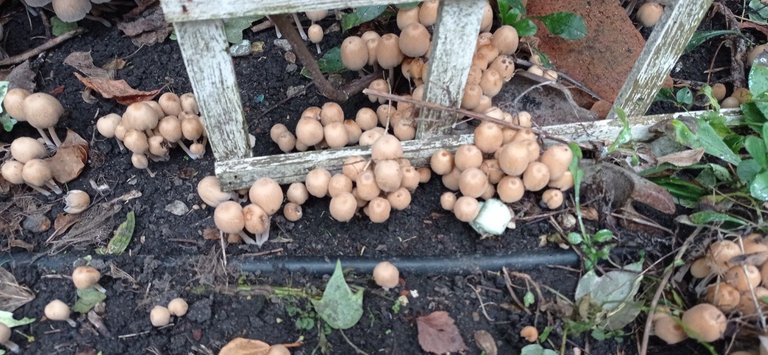
Here, in the photo above, are the mushrooms. Lots of tiny ones.
Can anyone help me identify them ? Identifying fungi is apparently quite difficult, and I've certainly struggled to work out what these ones are.
The top three suspects from the sources I've seen, which are admittedly limited because they focus on the most common types found are fairy ring mushrooms, psilocybin (magic mushrooms) and honey fugus. The added complication is that these are young specimens which might change quite a lot once they open up and mature.
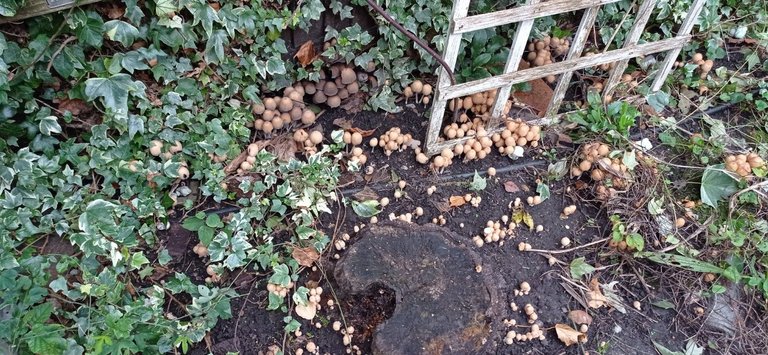
My biggest worry is that they are my nemesis, honey fungus. The most evil plant in our garden. Murderer of trees and shrubs.
We've lost a apple, holly, willow and cherry trees to it, as well as broom and privet bushes. The only good news is that where the holly trees were a self-seeded yew tree has popped up, and yew and laurel are apparently very resistant to honey fungus. So in about 80 years we'll have a magnificent yew tree in the front garden !
The problem with honey fungus is that it starts out in dead tree and bush roots, then spreads to the roots of living trees and kills them. The mushrooms you see in these photos are the fruiting bodies, but they are just the brief visible manifestation of an underground infestation.
Once established, it spreads with tendrils from plant to plant, and they can go for a good thirty or more feet along and five feet deep until they find something else they can feed on and kill.
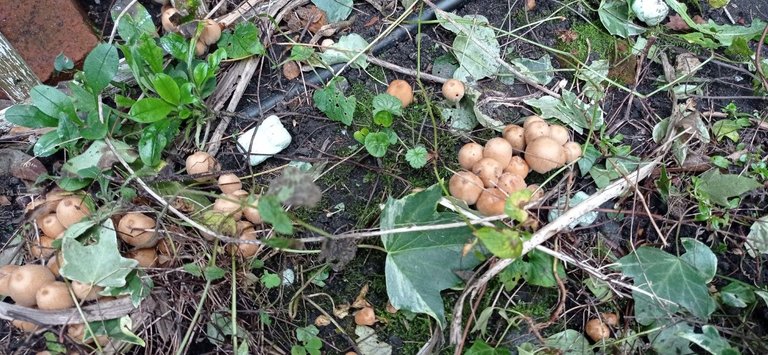
Honey fungus is endemic in our area, and our tree surgeon has advised that it's almost impossible to get rid of; we'd need to put an impermeable barrier down to a depth of at least 4 feet, potentially dig out and replace all the soil or repeatedly till it to break up the rhizomes, and dig out any plant that gets infected.
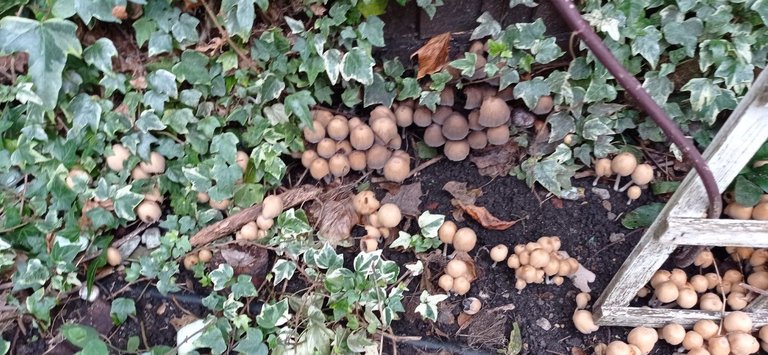
So really, if it is honey fungus it's just a case of living with it and keeping our plants as healthy as possible in other ways to help them resist it for as long as possible.
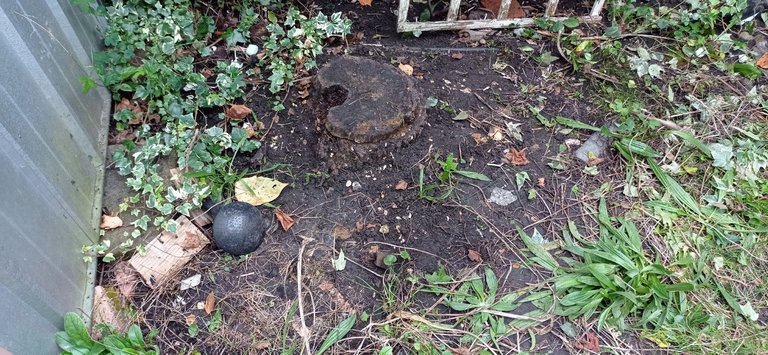
Just to be sure, I scraped off all the mushrooms, as you can see in the photo above. Even though it won't have killed the fungus it stops them spreading spores to make the problem even worse.
But if anyone has a better idea thanme of what these mushrooms are, I'd love to know !
All photos by me